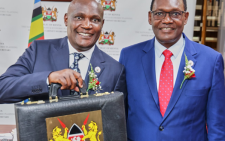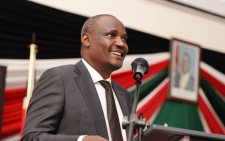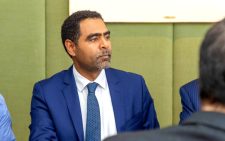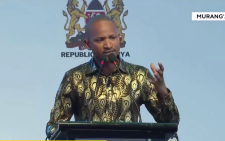Inside Yatani’s Sh3.6 trillion spending plan
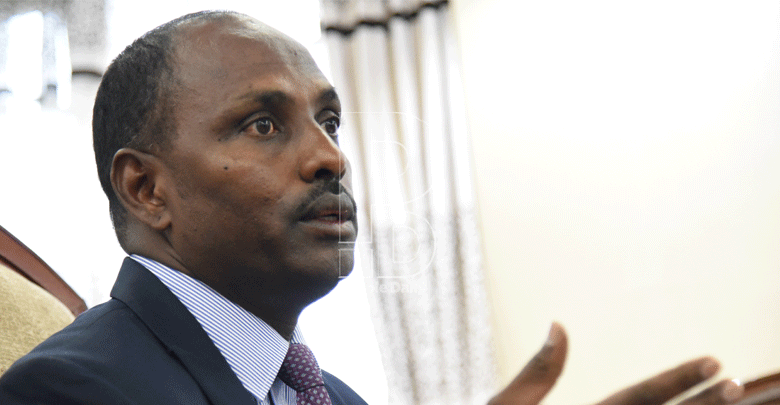
The National Treasury yesterday tabled in Parliament a summary Kenya’s most ambitious Sh3.63 trillion budget for the year 2021/22.
The budget is set to be President Uhuru Kenyatta’s last attempt to cushion his legacy projects which have been hard hit by Covid-19 pandemic disruptions.
The budget for the Financial Year 2021/22 will surge in excess of Sh800 billion from the current Sh2.81 trillion to fuel the economy.
National government is set to get Sh1.93 trillion, with Sh1.3 trillion going to the Consolidated Fund Services (CFS) while Sh370 billion will be set aside as County Equitable Share.
The budget policy focused on the Big Four agenda, post Covid-19 recovery, the strategic policy initiatives of the government to accelerate growth, employment creation and poverty reduction.
“Sh135.3 billion has been allocated in the Financial Year 2021/22 budget to implement Big Four agenda under the clusters, both for drivers and enablers,” says Treasury.
Budget framework
The Universal Health Care has been apportioned Sh47.7 billion, manufacturing sector Sh18.4 billion, food security Sh54 billion while affordable housing will get Sh14.9 billion. The budget framework intends to ensure that through this budget it will target cash towards critical needs.
As a stimulus to the economy, Treasury has allocated Sh26.6 billion in the 2021/2022 financial year for post Covid-19 programmes.
According to estimates tabled in the National Assembly yesterday, the money is in addition to the allocation for the big four priorities.
“Sh26.6 billion has been allocated in the FY2021/2022 budget for Post Covid-19 Economic Stimulus Programme,” reads the summary from the National Treasury.
National Treasury Cabinet Secretary Ukur Yatani says the government was closely monitoring the domestic and external environment so that it could take appropriate measures to safeguard the economy against adverse effects of Covid-19
Treasury is targeting to collect Sh2.04 trillion including Appropriations-in-Aid (AiA) with ordinary revenues projected at Sh1.78 trillion.
“On the other hand, total expenditure and net lending are projected at Sh3.05 trillion with recurrent expenditures estimated at Sh2.02 trillion,” says the report.
National Treasury had raised a red flag that ordinary revenue shortfalls could get wider this financial year, on the virus shocks.
With little headroom on the back of the pandemic, Yatani must deepen austerity measures in government expenditure to cater for a dip in projected revenue, a move that could have a direct knock-on effect on various development projects.
The challenge will be to actualise the targets which have been elusive in the past. In the last financial year (2019/20), for example, revenue collections fell short of the target by Sh0.31 trillion to stand at Sh1.57 trillion, against a target of Sh1.88 trillion.
“We have also had to critically review our existing programmes and policies to ensure that they are not only consistent with our development agenda but also informed by emerging realities brought about by the emergence of Covid-19 pandemic,” said Yatani in the last Budget Policy Statement report.
Already Treasury has been hit hard by a court case that stopped the Kenya Revenue Authority (KRA) from collecting the minimum tax which was expected to raise Sh21 billion in the next financial year.
“Given the projected expenditures and revenues, the fiscal deficit is projected at Sh952.9 billion,” says Treasury.
Financing of the budget will be through net external financing (foreign debt) of Sh291.3 billion and net domestic borrowing of Sh661.9 billion.
This means the government will be in the market locally in a move that is counterproductive by elbowing out industry especially small entrepreneurs from accessing loans as they will be deemed risky.
Small businesses
Samuel Nyandemo, an economics lecturer at the University of Nairobi, wondered why Treasury is still targeting the Big Four agenda despite little resources for mega projects.
“The government should target small businesses with stimulus packages so that they can stand on their own feet, instead of pumping money into agriculture,” he said.
Fears abound that with the government’s increased appetite for loans estimated at an average of Sh1 trillion per annum, it may soon hit the ceiling even as it plays down the debt stress levels.
But again, these are tell tale signs why the Treasury CS said in the 2021 Medium Term Debt Management Strategy (MTDM) that it will not be possible to fund FY2021/22 budget if the debt ceiling is not increased.
In its debt management strategy released recently, Treasury indicated that it intended to request Parliament to revise the ceiling upwards to enable it to borrow more.
But John Nyangi, the head of research at the Institute of Public Finance Kenya, warns the ballooning public debt means the country will have even less to spend on development projects.
Nyangi says the debt could hit Sh9.4 trillion by next year, above the debt ceiling set by Parliament of Sh9 trillion.
